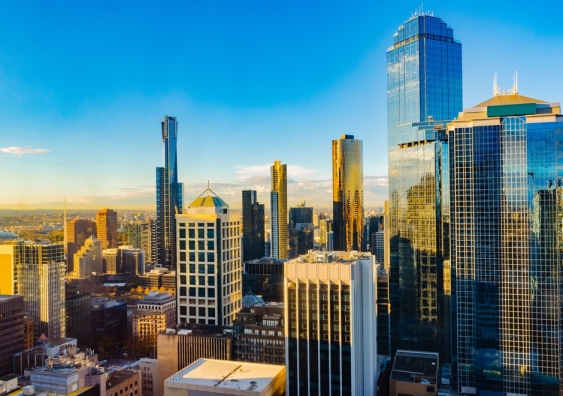Australia’s high rises could become heat traps
Slick, glass skyscrapers reliant on air-conditioning for cooling could eventually become heat traps for Australian residents.
Slick, glass skyscrapers reliant on air-conditioning for cooling could eventually become heat traps for Australian residents.

Slick, glass skyscrapers reliant on air-conditioning for cooling could eventually become heat traps for Australian residents.
“Essentially, we’re all cooking ourselves,” says UNSW Built Environment skyscraper expert Dr Philip Oldfield, whose research focuses on tall buildings, sustainability and embodied energy and carbon.
“We need to think beyond the traditional glass box design and build skyscrapers that better suit the Australian climate. Floor-to-ceiling glass might celebrate the million-dollar views that height provides but from an environmental view-point it’s criminal.”
Dr Oldfield says if high temperatures similar to those Australia experienced in recent heat waves were combined with a power failure, the result could be extreme discomfort and serious health problems for residents in tall buildings.
“Tall buildings tend to overheat more often than other building types, which is exacerbated if they are highly glazed. This could pose significant health issues to the occupants in a heatwave if the air-conditioning fails, especially for the elderly who may struggle to leave their home.”
Dr Oldfield will discuss opportunities to rethink Australian tall building design inspired by climate, culture and context at the inaugural Australian Smart Skyscrapers Summit in Melbourne on 28 and 29 March.
Tall buildings tend to overheat more often than other building types, which is exacerbated if they are highly glazed.
Most Australian skyscrapers are made up of 60–80% glazing, but Dr Oldfield’s research shows that high rises constructed with only 40% glazing would still serve its purpose but utilise far less energy, and pose less risk of overheating.
He suggests this would form a more contextual response to the Australian climate, citing a need to create skyscrapers that balance the view with appropriate shade and solidity and developing designs that respond to the local environment and sun path.
“Adopting this approach could breed a new generation of sustainable Australian towers, uniquely linked to one of a city’s strongest determinants – its climate.”
Dr Oldfield says greenery on the exterior of tall buildings can greatly reduce temperatures, citing Sydney’s award-winning One Central Park as an example.
“Research shows greenery can save around 8% of a building’s cooling loads,” Dr Oldfield said. “What’s more, it can provide a lush organic beauty that offsets the monotony of concrete and glass in the city.
“Australia is currently in the midst of a high rise construction boom, with around 272 towers either under construction or proposed – now is the time for us to start designing energy-efficient, safe buildings for residents.”
Dr Oldfield will also take part in a conference panel discussion on Regulations Impacting Height Limits for High Rise Buildings.